Rapid structural and compositional change in an old-growth subtropical forest: using plant traits to identify probable drivers
- PMID: 24069204
- PMCID: PMC3775741
- DOI: 10.1371/journal.pone.0073546
Rapid structural and compositional change in an old-growth subtropical forest: using plant traits to identify probable drivers
Abstract
Recent studies have shown directional changes in old-growth tropical forests, but changes are complex and diverse, and their drivers unclear. Here, we report rapid net structural and compositional changes in an old-growth subtropical forest and we assess the functional nature of these changes to test hypothetical drivers including recovery from past disturbances, reduction in ungulate browsing, CO2 fertilization, and increases in rainfall and temperature. The study relies on 15 years of demographic monitoring within 8 ha of subtropical montane forest in Argentina. Between 1992 and 2007, stem density markedly increased by 50% (12 stems ha(-1) y(-1)) and basal area by 6% (0.13 m(2) ha(-1) y(-1)). Increased stem density resulted from enhanced recruitment of understory treelets (Piper tucumanum, Eugenia uniflora, Allophylus edulis) into small size classes. Among 27 common tree species, net population growth was negatively correlated with maximum tree size and longevity, and positively correlated with leaf size and leaf nutrient content, especially so when initial population size was controlled for. Changes were inconsistent with predictions derived from past disturbances (no increase in shade-tolerant or long-lived late-succesional species), rainfall or temperature increase (no increase in evergreen or deciduous species, respectively). However, the increase in nutrient-rich soft-leaved species was consistent with exclusion of large herbivores two decades before monitoring started; and CO2 fertilization could help explain the disproportionate increase in small stems. Reductions in populations of large vertebrates have been observed in many otherwise undisturbed tropical forests, and our results suggest they can have important structural and functional repercussions in these forests.
Conflict of interest statement
Figures
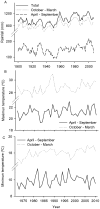
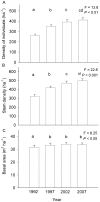

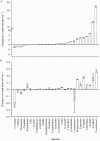
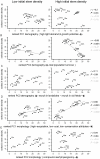
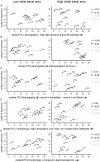
Similar articles
-
Height-related changes in leaf photosynthetic traits in diverse Bornean tropical rain forest trees.Oecologia. 2015 Jan;177(1):191-202. doi: 10.1007/s00442-014-3126-0. Epub 2014 Nov 2. Oecologia. 2015. PMID: 25362582
-
Architecture of 54 moist-forest tree species: traits, trade-offs, and functional groups.Ecology. 2006 May;87(5):1289-301. doi: 10.1890/0012-9658(2006)87[1289:aomtst]2.0.co;2. Ecology. 2006. PMID: 16761607
-
Growth synchrony between leaves and stems during twig development differs among plant functional types of subtropical rainforest woody species.Tree Physiol. 2015 Jun;35(6):621-31. doi: 10.1093/treephys/tpv021. Epub 2015 Mar 26. Tree Physiol. 2015. PMID: 25813701
-
Some aspects of ecophysiological and biogeochemical responses of tropical forests to atmospheric change.Philos Trans R Soc Lond B Biol Sci. 2004 Mar 29;359(1443):463-76. doi: 10.1098/rstb.2003.1424. Philos Trans R Soc Lond B Biol Sci. 2004. PMID: 15212096 Free PMC article. Review.
-
Disturbance regimes, gap-demanding trees and seed mass related to tree height in warm temperate rain forests worldwide.Biol Rev Camb Philos Soc. 2013 Aug;88(3):701-44. doi: 10.1111/brv.12029. Epub 2013 Mar 19. Biol Rev Camb Philos Soc. 2013. PMID: 23506298 Free PMC article. Review.
Cited by
-
Large-scale patterns of turnover and Basal area change in Andean forests.PLoS One. 2015 May 14;10(5):e0126594. doi: 10.1371/journal.pone.0126594. eCollection 2015. PLoS One. 2015. PMID: 25973977 Free PMC article.
-
Disturbance history mediates climate change effects on subtropical forest biomass and dynamics.Ecol Evol. 2019 May 27;9(12):7184-7199. doi: 10.1002/ece3.5289. eCollection 2019 Jun. Ecol Evol. 2019. PMID: 31380042 Free PMC article.
References
-
- Laurance WF, Oliveira AA, Laurance SG, Condit R, Nascimento HEM, et al. (2004) Pervasive alteration of tree communities in undisturbed Amazonian forests. Nature 428: 171–175. - PubMed
-
- Feeley KJ, Davies SJ, Perez R, Hubbell SP, Foster RB (2011) Directional changes in the species composition of a tropical forest. Ecology 92: 871–882. - PubMed
-
- Lewis SL, Lloyd J, Stich S, Mitchard ETA, Laurance WF (2009a) Changing ecology of tropical forests: evidence and drivers. Annu Rev Ecol Evol Syst 40: 529–549.
Publication types
MeSH terms
LinkOut - more resources
Full Text Sources
Other Literature Sources
Research Materials
Miscellaneous

